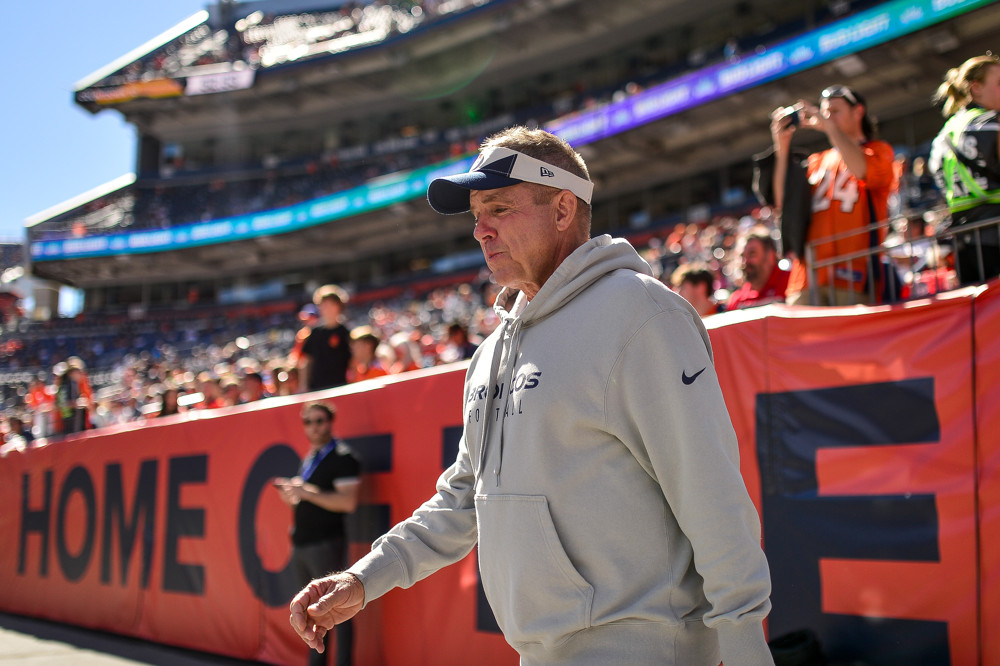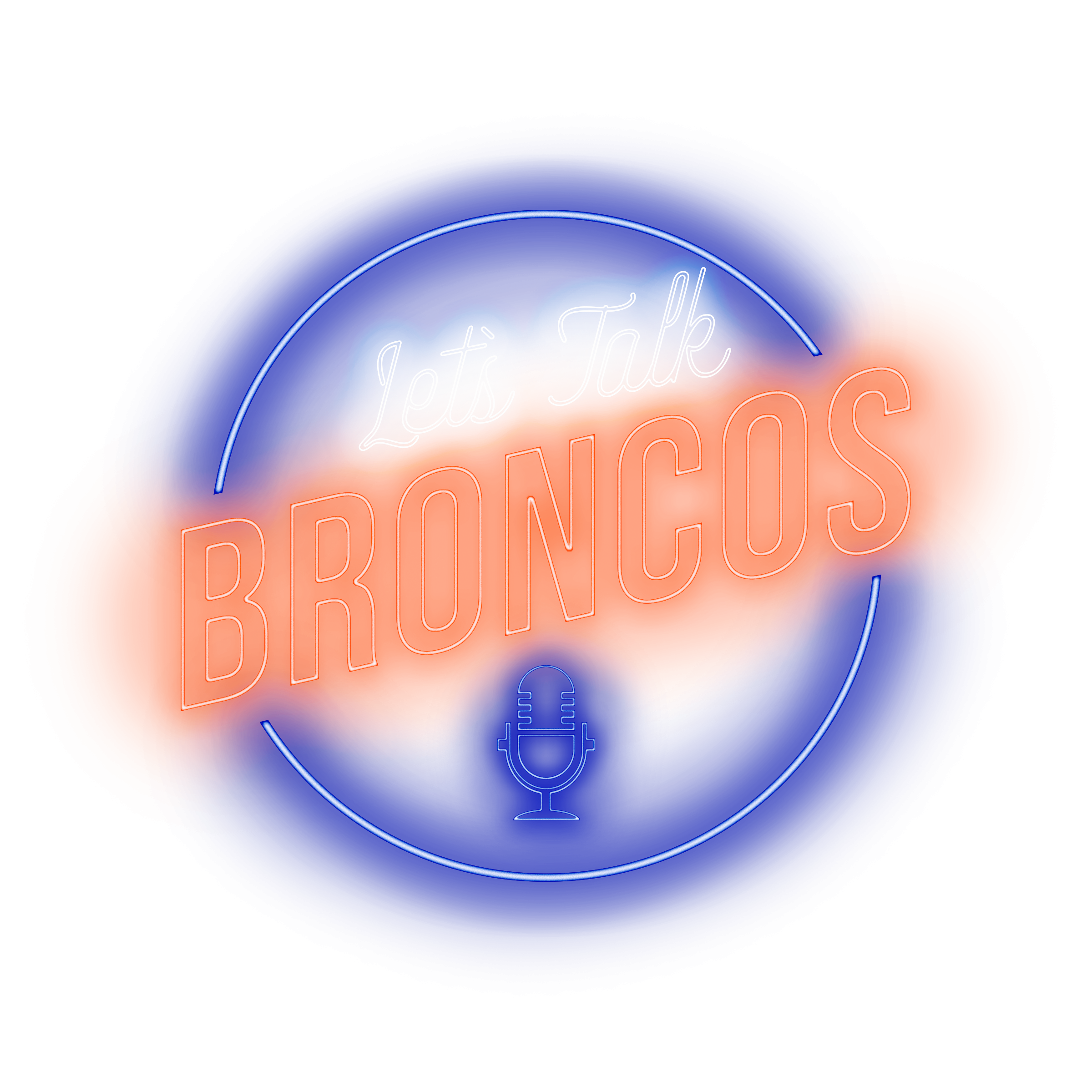
With it being peak NFL Draft season, any time you log onto Twitter, it isn’t long before you find a mock draft simulation tweeted from a Denver Broncos fan.
These mocks often include the Broncos trading down from 12, collecting multiple day two picks in the process, and still coming away with a top prospect in the second half of the first round.
The justification is obvious — Denver has dealt a total of three first-round picks and three second-round picks in return for Sean Payton and Russell Wilson, with the latter no longer on the team. The Broncos are old, expensive, and untalented at a majority of the positions on the roster. On paper, it makes complete sense to explore adding more picks in an attempt to add youth throughout the roster.
Current NFL Offensive Line projected 2024 starters.
— Mike Clay (@MikeClayNFL) March 18, 2024
Plenty of voids remain + a few tricky teams that need to be sorted out, but it gives you an idea where things stand… pic.twitter.com/IA73XahxpJ
The problem is that, during the NFL draft, Denver will not be operating in a mock draft machine. When it comes to reality, there are several reasons to believe that the offers sitting on the table for Denver on draft day likely will fall short of fan expectations.
The history of non-QB trade-ups suggests a lesser return
When evaluating trade-down opportunities and what options Payton and Co. will have on draft day, it is important to consider all of the variables that will impact their choice.
Perhaps the biggest piece of context is that, if Denver were to trade down, it likely wouldn’t be with a team coming up for a quarterback.
Looking at the draft landscape, there are four quarterbacks set to be selected within the first 10 picks: Caleb Williams, Drake Maye, Jayden Daniels, and J.J. McCarthy. Chicago and Washington will both certainly select one, and there’s a strong possibility New England will too, while Minnesota lurks with no quarterback but two first-round picks in their bandolier.
We have seen massive trade-down hauls before, like Miami receiving three first-rounders for pick No. 3 in the 2021 draft, or the Giants receiving two firsts and additional capital to move down from 11 to 20. The issue with comparing these moves to Denver is that, in each scenario, the team trading up was making their move to secure a quarterback.
Looking at the last five drafts, there have been multiple non-QB trade-up packages, around the 10-15 pick range. That sample can give us a feel for what a move for the Denver Broncos could look like.
To properly evaluate these moves, I’ve tallied the value of the trade-down of these moves according to the Fitzgerald-Spielberger trade value chart — a modern and more accurate version of Jimmy Johnson’s famed trade-value chart — to see what type of compensation fans can expect.
2019: Pittsburgh Steelers move up from 20 to 10 to select Devin Bush
Steelers receive: Pick 10 (1,833 points)
Denver Broncos receive: Pick 20, Pick 52, future 3rd (3,256 points)
Difference: +1,423 points
2021: New York Jets move up from 23 to 14 to select Alijah-Vera Tucker
Jets receive: Pick 14 and Pick 143 (2,148 points)
Minnesota Vikings receive: Pick 23, 66, and 88 (3,019 points)
Difference: +871 points
2022: Detroit Lions move up from 32 to 12 to select Jameson Williams
Lions receive: Pick 12 and Pick 46 (2,801 points)
Minnesota Vikings receive: Pick 32, Pick 34, and Pick 66 (3,344 points)
Difference: +543 points
2022: New Orleans Saints move up from 16 to 11 to select Chris Olave
Saints receive: Pick 11 (1,785 points)
Washington Commanders receive: Pick 16, Pick 98, and Pick 120 (2,845 points)
Difference: +1,060 points
On average, these four trade-ups led to the trade-down team netting 2,145 points of value while the trade-up team received 3,116 points of value. This results in, without further context, the trade-down team landing 971 points of extra value, equivalent to the 55th overall selection.
Chicago Bears lurk as a threat for the Denver Broncos
Evaluating some previous trade-downs over the year is a healthy exercise to learn the expected value the team can add, but further context makes the return likely to be even weaker than these samples suggest.
If the Broncos are the team that most needs to recoup value and add picks, the Bears are right behind them at number two. Following trades for Ryan Bates and Keenan Allen, Chicago enters the draft with only four selections: 1, 9, 75, and 122.
The Bears will likely want to add young talent around their future franchise quarterback Caleb Williams, and without many glaring holes, the Bears make a ton of sense as a team to move down from pick No. 9 and stock up on selections.
So, not only is the Broncos’ leverage being dinged by the non-QB trade tax, but there is also a strong possibility that they are negotiating against a team with a higher selection that is equally desperate to find a trade partner.
For example, if the Jacksonville Jaguars are desperate for a receiver to replace Calvin Ridley, and Rome Odunze slips to the ninth pick, the Jags will want to get to that pick rather than wait around for the 12th selection. That would mean, rather than trading with a team that badly wants to move up, the Broncos might have to negotiate with the second-best offer, an offer which might not even come.
The Draft Board Has a Cliff
Besides the evaluation of what value the team can get in a trade-down, the team has to consider how it stacks its board and where the drop off in talent is.
Many draft analysts have said that, in any given draft, a team only has 15-20 players with first-round grades. More often than not, picks 20-40 are graded together as second-round prospects and the prospects’ rankings within their tier vary from team to team.
Some NFL teams have fewer than 15 players with first-round grades in this week's draft. So who could be some of the surprises of Round 1? Here are seven names to watch: https://t.co/nuMteJtpJh
— Tom Pelissero (@TomPelissero) April 26, 2022
With that being considered, the top of this draft looks very strong, especially on offense. Outside of the top-four quarterbacks, four pass catchers will likely be gone by the 12th pick. There will likely be a few offensive linemen to go before the Broncos’ selection as well, but Denver is going to have its choice of a few very good offensive linemen and/or edge rushers, such as Amarius Mims, Troy Fautanu, and Jared Verse.
If Denver moves down, you get away from these prospects and turn your attention to the likes of Tyler Guyton and Chop Robinson. Good prospects, but not quite at the level of the players that they will be choosing from at 12, and the Denver Broncos need difference makers.
When you consider that a move down is likely, at best, going to result in multiple days of two picks back, and the fact that Denver isn’t even the highest-picking trade-down team in the 10-15 range, the options are going to be slim. If the best offer the Broncos receive features just one day-two pick in return, it is likely the better option to take the potential blue-chip player on the board.
Every fanbase would like to see its team trade down and collect extra draft capital, but it takes two to make a deal and there’s no guarantee that there will be a team that is willing to pay a fair price.
